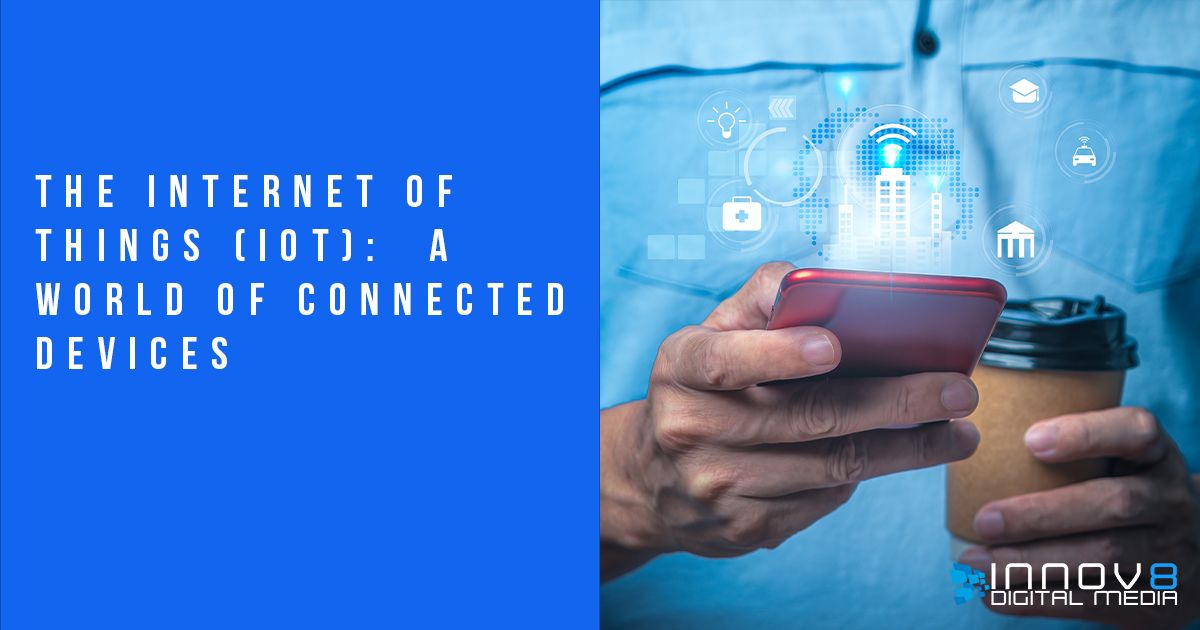 Adam Keith Milton-Barker 1565 2023-10-29
Adam Keith Milton-Barker 1565 2023-10-29
The Internet of Things, often abbreviated as IoT, has become a ubiquitous term in today's technology-driven world. But what exactly is IoT, and how does it work? In this article, we'll explore the concept of IoT, the programming languages and protocols that power it, and some of the diverse use cases across various industries.
Understanding IoT
IoT refers to the network of physical devices, vehicles, appliances, and other objects embedded with sensors, software, and network connectivity, allowing them to collect and exchange data over the internet. In simpler terms, it's a giant network of "smart" things that can communicate with each other and with centralized systems, all to make our lives more efficient, convenient, and interconnected.
These smart devices can range from a simple sensor that measures temperature to complex machinery on a factory floor. They're often equipped with microcontrollers or microprocessors that enable them to process data and communicate with other devices or central servers.
Programming Languages for IoT
Programming languages play a crucial role in IoT development. Two of the most popular languages for IoT development are Python and C++.
Python:
Python is known for its simplicity and ease of use. It's a popular choice for IoT development, especially for prototyping and developing applications for smaller devices like Raspberry Pi. Python's rich ecosystem of libraries, including NumPy, TensorFlow, and libraries for IoT platforms like MicroPython, make it a versatile choice.
C++:
C++ is another prevalent language in the IoT landscape. It's favored for its performance and efficiency, which is crucial in resource-constrained IoT devices. C++ provides a high level of control over hardware and system resources, making it a solid choice for developing embedded IoT applications.
IoT Communication Protocols
To enable devices to communicate with each other and with central systems, IoT relies on various communication protocols. Here are some popular ones:
MQTT (Message Queuing Telemetry Transport):
MQTT is a lightweight and efficient messaging protocol designed for constrained devices and unreliable networks. It's widely used in IoT applications where low bandwidth and minimal power consumption are critical. MQTT follows a publish-subscribe model, allowing devices to subscribe to topics of interest and receive messages when they're published.
HTTP (Hypertext Transfer Protocol):
While HTTP is a fundamental protocol for the World Wide Web, it's also used in IoT to allow devices to send and receive data over the internet. It's a good fit for devices with ample processing power and stable connections. RESTful APIs built on HTTP are commonly used in IoT applications for data exchange.
AMQP (Advanced Message Queuing Protocol):
AMQP is a messaging protocol that provides more advanced features than MQTT, making it suitable for more complex IoT scenarios. It's designed for reliable message delivery and supports features like queues, topics, and transactions. AMQP is often used in industrial and enterprise IoT applications.
IoT Use Cases by Industry
IoT has a broad range of applications across various industries. Here are a few examples:
Healthcare:
IoT devices in healthcare monitor patients' vital signs, track medication adherence, and help remotely diagnose medical conditions. Wearable fitness trackers and smart medical devices like insulin pumps are commonplace.
Agriculture:
IoT sensors help farmers optimize their crop yields by monitoring soil conditions, weather, and crop health. This data can inform decisions about irrigation, fertilization, and pest control.
Manufacturing:
In the industrial sector, IoT is used to optimize processes, monitor equipment health, and ensure quality control. Sensors on factory machines can detect malfunctions and schedule maintenance proactively.
Smart Homes:
Smart home devices like thermostats, security cameras, and voice-activated assistants are all part of the IoT ecosystem. They enable homeowners to control their environments and enhance security and convenience.
Transportation:
Connected vehicles, both autonomous and traditional, use IoT to communicate with each other and with traffic infrastructure. This enables features like collision avoidance, traffic management, and remote diagnostics.
Retail:
Retailers use IoT for inventory management, customer analytics, and personalized shopping experiences. Smart shelves can automatically reorder products when stock is low, and beacons can send promotions to nearby customers.
In conclusion, the Internet of Things is a vast network of interconnected devices that span numerous industries, thanks to its versatile programming languages and efficient communication protocols. As IoT continues to evolve, we can expect even more innovative applications that enhance our lives and the efficiency of various sectors. With Python and C++ at the helm, the possibilities for IoT development are limitless, and it's an exciting field to watch as it continues to grow and evolve.
Innov8 Digital Media is a company that specializes in offering a wide spectrum of Internet of Things (IoT) solutions. We understand that the needs of businesses and industries may vary significantly, and to address this diversity, Innov8 Digital Media provides a robust selection of IoT solutions. These include both pre-packaged, off-the-shelf solutions for those seeking quick and efficient implementations, as well as customized solutions tailored to the specific requirements of businesses looking for a more personalized approach.
In addition to our range of IoT solutions, we also Intelliconect Platform-as-a-Service (PaaS). This PaaS is a powerful and flexible framework that enables businesses to harness the full potential of IoT technology. It provides a solid foundation for building, managing, and scaling IoT applications and services. With Innov8 Digital Media's off-the-shelf and custom solutions combined with our Intelliconect PaaS, we are well-equipped to support a variety of IoT projects across industries, making us a valuable partner in the rapidly growing IoT ecosystem.
Comments
Have any thoughts you would like to share? Use the comments below.